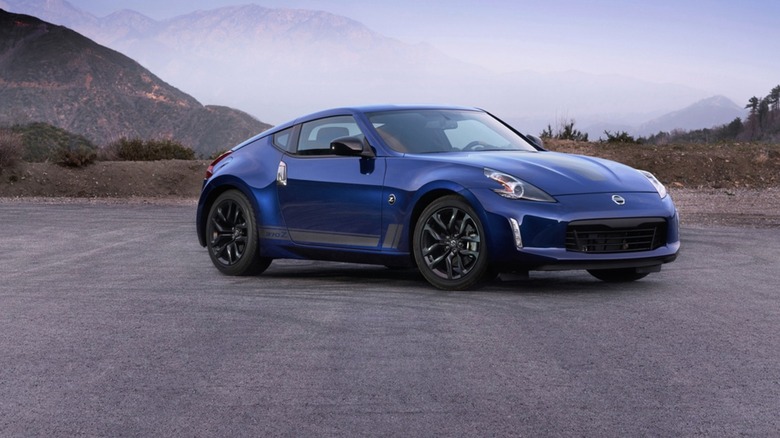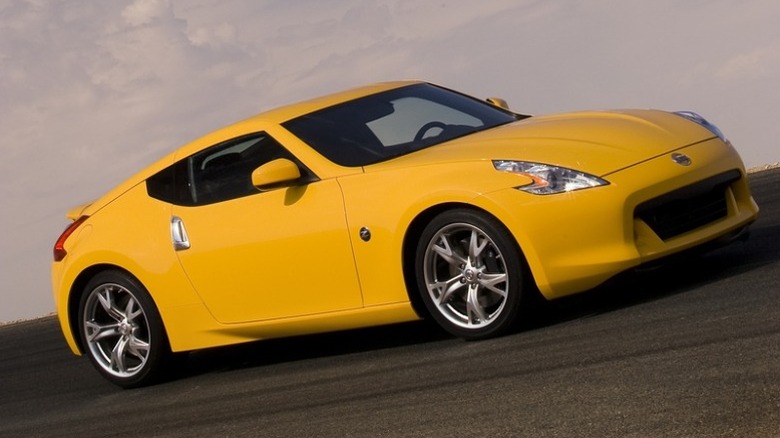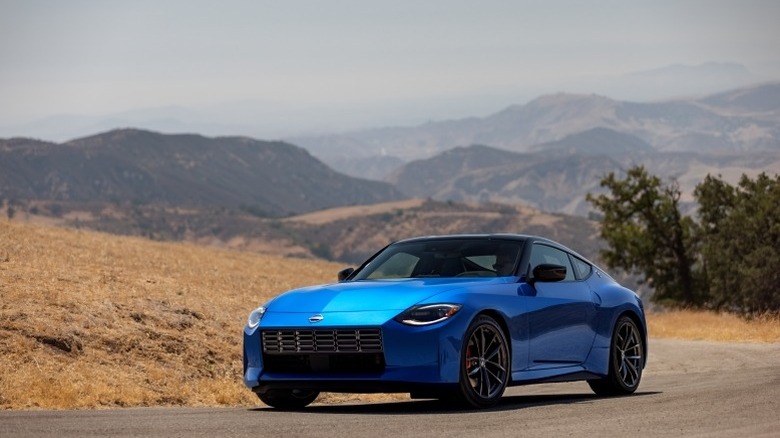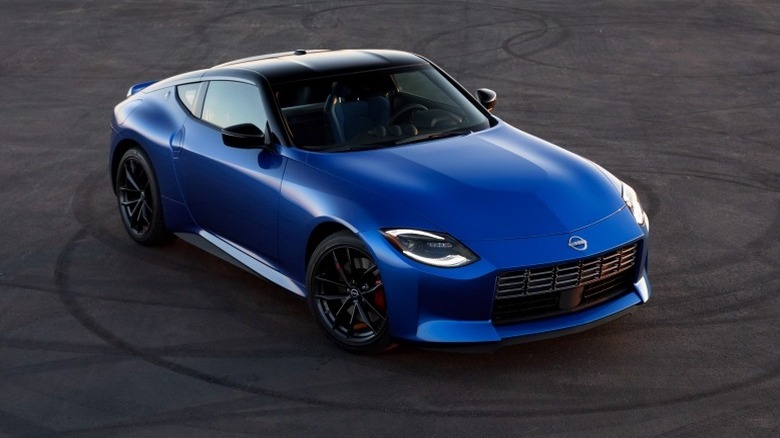Why Did Nissan Discontinue The 370Z (And How Does The New Z Compare)?
Like any Nissan Z car, the sixth-gen 370z had a clear purpose: to offer an attractive design and hilariously good fun all in one affordable package. You could certainly say that the rear-drive sports car delivered on its promise. When it first arrived on the scene as a 2009 model and replacement for the fifth-generation 350z, the 2-door, 2-seater sports car had a strong, low-slung stance and well-tuned suspension that imbued it with lithe handling. The Nissan 370z was also reasonably priced, with the entry-level trim starting at $30,625.
However, despite it being such an accessible and seemingly compelling choice, U.S. drivers were reluctant to buy the Nissan 370z. Nissan was only able to sell 3,302 370z cars in 2019, according to Car and Driver. In a handwritten letter translated from Japanese by CarExpert, Z car Chief Product Specialist Hiroshi Tamura attributed the model's poor sales to a combination of its "uninspiring" exterior design, "subpar" performance, and long delay between updates. Hence, Nissan decided to cull the sports car model starting with the 370z Roadster, which was discontinued in 2019. The 370z Coupe said its goodbyes after the 2020 model year, with Nissan opting to phase out the sixth Z car generation altogether in order to make way for the seventh-gen version.
The Nissan 370z's discontinuation was part of the ongoing evolution of the Z car
While slowing sales and an aging design contributed to the sudden demise of the 370z, Nissan phasing out the 370z is the latest step in the Z's evolution. The series launched with the first-generation Datsun 240Z (marketed as the Fairlady Z in Japan) back in 1969. From that moment on, there have been seven generations of the Nissan/Datsun Z, with each update bringing sensible upgrades that are meant to make the sports car a more compelling proposition than the last. The 370z, for instance, offered a more upscale cabin, a modified chassis with a much lower stance, and a 26 more horsepower than the 350z it replaced.
Sadly, the 370z lost its appeal rather quickly. As time passed, it got less and less popular due in part to the growing attractiveness of electric cars and turbo hot hatches. By 2018, it had became clear to observers that the sports car would soon be on its way out the door in favor of something that feels modern-day plush. In September of that year, Nissan's Senior Vice President for Global Design Alfonso Albaisa revealed that a 370z successor was in the works. Nissan's answer turned out to be a brand new two-door fastback coupe in the form of the Nissan Z that was revealed back in 2020.
How does the new Nissan Z compare to the discontinued 370z?
While it has the same Nissan FM Platform and manual transmission as the 370Z, the 2023 Nissan Z brought significant improvements. One of the biggest changes can be found under the hood, where the naturally aspirated V6 found on the 370z made way for a 400-hp, 3.0-liter twin-turbocharged V6 engine shared with the Infiniti Q60 Red Sport 400.
Buyers could mate the V6 to either the aforementioned six-speed manual or a nine-speed automatic transmission. In a Car and Driver testing, a 2023 Nissan Z with the returning six-speed manual transmission bolted to 60 mph in 4.5 seconds, which is 0.4 seconds faster than a manual-equipped 2019 Nissan 370z. Throw the new automatic gearbox in the new Z and that 0-60 mph time is down to 4.3 seconds — some 0.3 seconds better than an automatic 370z.
The higher-performance Nissan Z NISMO is even wilder. It extracts 420 horsepower and 384 lb-ft of torque from the twin-turbo V6 (up from 350 hp and 276 lb-ft for the 2020 Nissan 370z Nismo). That power is routed to the wheels via a nine-speed automatic. The dart to 60 mph in this case takes just 4.2 seconds. In our review of the Z NISMO, we called it "wild escapism on four wheels."
How does the new Z car compare to the discontinued Nissan 370z in terms of their exterior dimensions and equipment?
Dimensionally, the new Nissan Z and discontinued 370z are similar in most aspects, only the seventh-generation model is longer overall than its predecessor, at 172.4 inches long versus 167.5 for the Nissan 370z. Other than that, their width, height, and wheelbase are all the same at 72.6, 51.8, and 100.4 inches, respectively. Inside, you also get the same head and legroom with both models at 38.2 and 42.9 inches.
With regards to equipment, the new Nissan Z comes standard with 18-inch alloy wheels, proximity keyless entry, an 8-inch touchscreen infotainment system, a 12.3-inch digital gauge cluster, voice recognition, as well as wired Apple CarPlay and Android Auto. Other goodies include satellite radio, two USB ports, Bluetooth, and a six-speaker audio system. The discontinued Nissan 370z wasn't as heavy on tech, with only a USB port, Bluetooth, and six-speaker stereo coming as standard on the 2020 model.
Buyers of the 370z who wanted a touchscreen infotainment had to choose the Sport Touring trim to access the available 7.0-inch touchscreen infotainment system, which came with navigation and satellite radio. As for the other standard amenities on the Nissan 370z, owners got 18-inch alloy wheels, HID headlights, keyless entry, push-button start, and automatic climate control. Pricing for the new Z car starts at $42,970 (msrp), over $12,000 more than the 2020 370z.



